Language
Simple But Effective Bass Tone Upgrades - Part 3
Welcome to the third installment of our multi-part bass tone upgrade feature! We've already covered pickups and electronics in our previous articles so now its time to move on to the next simple but effective upgrade: strings. While you should already be changing your strings regularly -- every month or so for average users or every other week if you consistently gig -- swapping out an old set for a new pair is the perfect time to experiment with the different tonal upgrade options strings can give your bass. It's actually pretty surprising just how much a different set can change your instrument's sound. Below, we'll be breaking down some individual aspects of bass strings along with some common tonal characteristics.
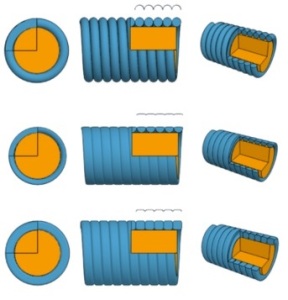 Anatomy of the three most common constructions. From Top: Roundwound, Flatwound and Halfwound.[/caption]
Flatwound – Very similar to the roundwound strings as far as general construction is concerned but with one huge and very important difference: the winding on these strings have a rounded square cross-section that makes for a flat, shallower profile as opposed to the ridges on a roundwound.They tend to sound like a worn-in roundwounds and then get mellower from there with a bit more low end, popular with jazz, country and blues bass bassists. A benefit of this type of string construction is the smoother feel which adds to the user’s comfort and playability. They also don’t cause nearly the same amount of fretboard and fret wire damage as roundwounds, making them a popular choice for fretless bass players in particular.
Halfwound – Also known as groundwound or pressure wound, these strings a cross between the flats and the rounds, with more mid-level tones of the rounds and the comfort and smoothness of the flats. The name comes from the fact that that these strings are basically roundwounds that have been smoothed out through either pressure or grinding. They are a popular choice for bass players that don’t like the shallow, mellow sound of the flatwounds but don’t feel like giving up its extra comfort, less finger noise and longer lifes
Tapewound – This least common type of bass string has a layer of nylon wrapped around the metal winding wire. Aside from having the softest touch, they produce a dark and soft tone that is similar to that of an upright bass. They’re usually black in color.
Anatomy of the three most common constructions. From Top: Roundwound, Flatwound and Halfwound.[/caption]
Flatwound – Very similar to the roundwound strings as far as general construction is concerned but with one huge and very important difference: the winding on these strings have a rounded square cross-section that makes for a flat, shallower profile as opposed to the ridges on a roundwound.They tend to sound like a worn-in roundwounds and then get mellower from there with a bit more low end, popular with jazz, country and blues bass bassists. A benefit of this type of string construction is the smoother feel which adds to the user’s comfort and playability. They also don’t cause nearly the same amount of fretboard and fret wire damage as roundwounds, making them a popular choice for fretless bass players in particular.
Halfwound – Also known as groundwound or pressure wound, these strings a cross between the flats and the rounds, with more mid-level tones of the rounds and the comfort and smoothness of the flats. The name comes from the fact that that these strings are basically roundwounds that have been smoothed out through either pressure or grinding. They are a popular choice for bass players that don’t like the shallow, mellow sound of the flatwounds but don’t feel like giving up its extra comfort, less finger noise and longer lifes
Tapewound – This least common type of bass string has a layer of nylon wrapped around the metal winding wire. Aside from having the softest touch, they produce a dark and soft tone that is similar to that of an upright bass. They’re usually black in color.
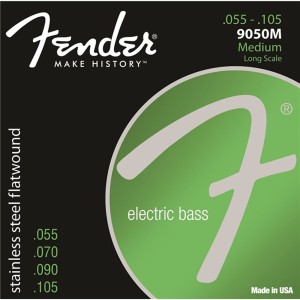 Fender's Stainless Flatwound Bass Strings offer mellow flatwound tone with a sleek feel and ultimate tuning stability, perfect for For reggae, jazz, country and more.[/caption]
String gauges (the diameter of the string) are usually measured in thousandths of an inch. The heavier a gauge the lower the tone it is capable of producing. In general, heavier gauges tend to give off a richer tone but demand more strength in your fingers. Most medium-gauge 4-string bass sets range between .045 and .105. However, there are many variations depending on the manufacturer.
Some manufacturers also like to take a mix-and-match approach in creating their string sets. For example, you’ll find 4-string sets with medium gauge G and D strings and light gauge A and E strings. Some bassists even prefer to buy individual strings in gauges that match their own preferences instead of sticking to the typical gauges found in string sets.
You should try and experiment with different gauges in general. For example, you can up your gauge with a set of thicker strings and tune your bass down to G instead of E. This will easily make your bass sound like an entirely new instrument. Don’t be afraid to try different sizes and variations until you find one that sounds and feels best to you.
There's still a lot more to cover! Come back next week when we'll be taking a look at bass effects and how to use them to strengthen your overall tone.
Fender's Stainless Flatwound Bass Strings offer mellow flatwound tone with a sleek feel and ultimate tuning stability, perfect for For reggae, jazz, country and more.[/caption]
String gauges (the diameter of the string) are usually measured in thousandths of an inch. The heavier a gauge the lower the tone it is capable of producing. In general, heavier gauges tend to give off a richer tone but demand more strength in your fingers. Most medium-gauge 4-string bass sets range between .045 and .105. However, there are many variations depending on the manufacturer.
Some manufacturers also like to take a mix-and-match approach in creating their string sets. For example, you’ll find 4-string sets with medium gauge G and D strings and light gauge A and E strings. Some bassists even prefer to buy individual strings in gauges that match their own preferences instead of sticking to the typical gauges found in string sets.
You should try and experiment with different gauges in general. For example, you can up your gauge with a set of thicker strings and tune your bass down to G instead of E. This will easily make your bass sound like an entirely new instrument. Don’t be afraid to try different sizes and variations until you find one that sounds and feels best to you.
There's still a lot more to cover! Come back next week when we'll be taking a look at bass effects and how to use them to strengthen your overall tone.
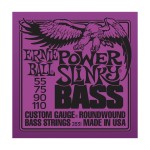 Check out our entire selection of bass strings![/caption]
[caption id="attachment_3795" align="alignleft" width="150"]
Check out our entire selection of bass strings![/caption]
[caption id="attachment_3795" align="alignleft" width="150"]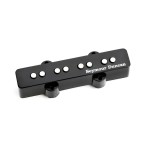 Simple But Effective Bass Tone Upgrades Part 1: Pickups[/caption]
[caption id="attachment_3900" align="alignleft" width="150"]
Simple But Effective Bass Tone Upgrades Part 1: Pickups[/caption]
[caption id="attachment_3900" align="alignleft" width="150"]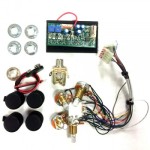 Simple But Effective Bass Tone Upgrades Part 2: Electronics[/caption]
Simple But Effective Bass Tone Upgrades Part 2: Electronics[/caption]
Construction
Most electric bass strings have an outer wrap around a steel core wire. The type of winding affects both the feel and tone of the string. Below are four of the most common types you'll come across: Roundwound – These are easily the most popular and common type of bass strings out there, named for the round profile of the coil around the core. Roundwound strings are known for their bright, loud sound and high-mid harmonics, making them the perfect choice for bassists who use popping and slapping techniques regularly in their playing. Overtime, they become dull and begin to give off a flat tone without any of that signature sparkle. Other drawbacks include a typically shorter lifespan when compared to other bass strings along with increased finger noise. Roundwounds also tend to wear down your fretboard and fret wires due to the pronounced ridges in their wiring. Despite this, they remain a favorite choice for rock, funk and R&B bass players thanks to their signature bright punch. [caption id="attachment_3974" align="alignright" width="288"] Anatomy of the three most common constructions. From Top: Roundwound, Flatwound and Halfwound.[/caption]
Flatwound – Very similar to the roundwound strings as far as general construction is concerned but with one huge and very important difference: the winding on these strings have a rounded square cross-section that makes for a flat, shallower profile as opposed to the ridges on a roundwound.They tend to sound like a worn-in roundwounds and then get mellower from there with a bit more low end, popular with jazz, country and blues bass bassists. A benefit of this type of string construction is the smoother feel which adds to the user’s comfort and playability. They also don’t cause nearly the same amount of fretboard and fret wire damage as roundwounds, making them a popular choice for fretless bass players in particular.
Halfwound – Also known as groundwound or pressure wound, these strings a cross between the flats and the rounds, with more mid-level tones of the rounds and the comfort and smoothness of the flats. The name comes from the fact that that these strings are basically roundwounds that have been smoothed out through either pressure or grinding. They are a popular choice for bass players that don’t like the shallow, mellow sound of the flatwounds but don’t feel like giving up its extra comfort, less finger noise and longer lifes
Tapewound – This least common type of bass string has a layer of nylon wrapped around the metal winding wire. Aside from having the softest touch, they produce a dark and soft tone that is similar to that of an upright bass. They’re usually black in color.
Anatomy of the three most common constructions. From Top: Roundwound, Flatwound and Halfwound.[/caption]
Flatwound – Very similar to the roundwound strings as far as general construction is concerned but with one huge and very important difference: the winding on these strings have a rounded square cross-section that makes for a flat, shallower profile as opposed to the ridges on a roundwound.They tend to sound like a worn-in roundwounds and then get mellower from there with a bit more low end, popular with jazz, country and blues bass bassists. A benefit of this type of string construction is the smoother feel which adds to the user’s comfort and playability. They also don’t cause nearly the same amount of fretboard and fret wire damage as roundwounds, making them a popular choice for fretless bass players in particular.
Halfwound – Also known as groundwound or pressure wound, these strings a cross between the flats and the rounds, with more mid-level tones of the rounds and the comfort and smoothness of the flats. The name comes from the fact that that these strings are basically roundwounds that have been smoothed out through either pressure or grinding. They are a popular choice for bass players that don’t like the shallow, mellow sound of the flatwounds but don’t feel like giving up its extra comfort, less finger noise and longer lifes
Tapewound – This least common type of bass string has a layer of nylon wrapped around the metal winding wire. Aside from having the softest touch, they produce a dark and soft tone that is similar to that of an upright bass. They’re usually black in color.
Material
The type of metal used in bass strings have an affect on not just their tone, but durability and feel as well. Here are a few of the most common types and some of their characteristics: Nickel-Plated Steel – Probably the most popular string material, they have a comfortable feel and bright tone that’s the choice of bassists in many different music genres. Pure Nickel – With less magnetic attraction than steel strings, they produce a warmer, vintage tone. They offer the sound of ‘50s and early ‘60s pop, rock, and country bass. Stainless Steel – They produce a very bright tone with good corrosion resistance. Popular with rock, jazz, and metal players. Copper-Plated Steel – Retaining the bright, sparkly response of steel, their thin copper coating produces rich acoustic overtones. Polymer-Coated – Many manufacturers use synthetic coating materials that extend string life by protecting them from corrosion. The effect on tone varies from one manufacturer to the next.Gauge
[caption id="attachment_3796" align="alignright" width="300"] Fender's Stainless Flatwound Bass Strings offer mellow flatwound tone with a sleek feel and ultimate tuning stability, perfect for For reggae, jazz, country and more.[/caption]
String gauges (the diameter of the string) are usually measured in thousandths of an inch. The heavier a gauge the lower the tone it is capable of producing. In general, heavier gauges tend to give off a richer tone but demand more strength in your fingers. Most medium-gauge 4-string bass sets range between .045 and .105. However, there are many variations depending on the manufacturer.
Some manufacturers also like to take a mix-and-match approach in creating their string sets. For example, you’ll find 4-string sets with medium gauge G and D strings and light gauge A and E strings. Some bassists even prefer to buy individual strings in gauges that match their own preferences instead of sticking to the typical gauges found in string sets.
You should try and experiment with different gauges in general. For example, you can up your gauge with a set of thicker strings and tune your bass down to G instead of E. This will easily make your bass sound like an entirely new instrument. Don’t be afraid to try different sizes and variations until you find one that sounds and feels best to you.
There's still a lot more to cover! Come back next week when we'll be taking a look at bass effects and how to use them to strengthen your overall tone.
Fender's Stainless Flatwound Bass Strings offer mellow flatwound tone with a sleek feel and ultimate tuning stability, perfect for For reggae, jazz, country and more.[/caption]
String gauges (the diameter of the string) are usually measured in thousandths of an inch. The heavier a gauge the lower the tone it is capable of producing. In general, heavier gauges tend to give off a richer tone but demand more strength in your fingers. Most medium-gauge 4-string bass sets range between .045 and .105. However, there are many variations depending on the manufacturer.
Some manufacturers also like to take a mix-and-match approach in creating their string sets. For example, you’ll find 4-string sets with medium gauge G and D strings and light gauge A and E strings. Some bassists even prefer to buy individual strings in gauges that match their own preferences instead of sticking to the typical gauges found in string sets.
You should try and experiment with different gauges in general. For example, you can up your gauge with a set of thicker strings and tune your bass down to G instead of E. This will easily make your bass sound like an entirely new instrument. Don’t be afraid to try different sizes and variations until you find one that sounds and feels best to you.
There's still a lot more to cover! Come back next week when we'll be taking a look at bass effects and how to use them to strengthen your overall tone.
Your Turn to Sound Off!
What are the perfect bass strings for your style?Sound off in the comment section below!
[caption id="attachment_3971" align="alignleft" width="150"] Check out our entire selection of bass strings![/caption]
[caption id="attachment_3795" align="alignleft" width="150"]
Check out our entire selection of bass strings![/caption]
[caption id="attachment_3795" align="alignleft" width="150"] Simple But Effective Bass Tone Upgrades Part 1: Pickups[/caption]
[caption id="attachment_3900" align="alignleft" width="150"]
Simple But Effective Bass Tone Upgrades Part 1: Pickups[/caption]
[caption id="attachment_3900" align="alignleft" width="150"] Simple But Effective Bass Tone Upgrades Part 2: Electronics[/caption]
Simple But Effective Bass Tone Upgrades Part 2: Electronics[/caption]
